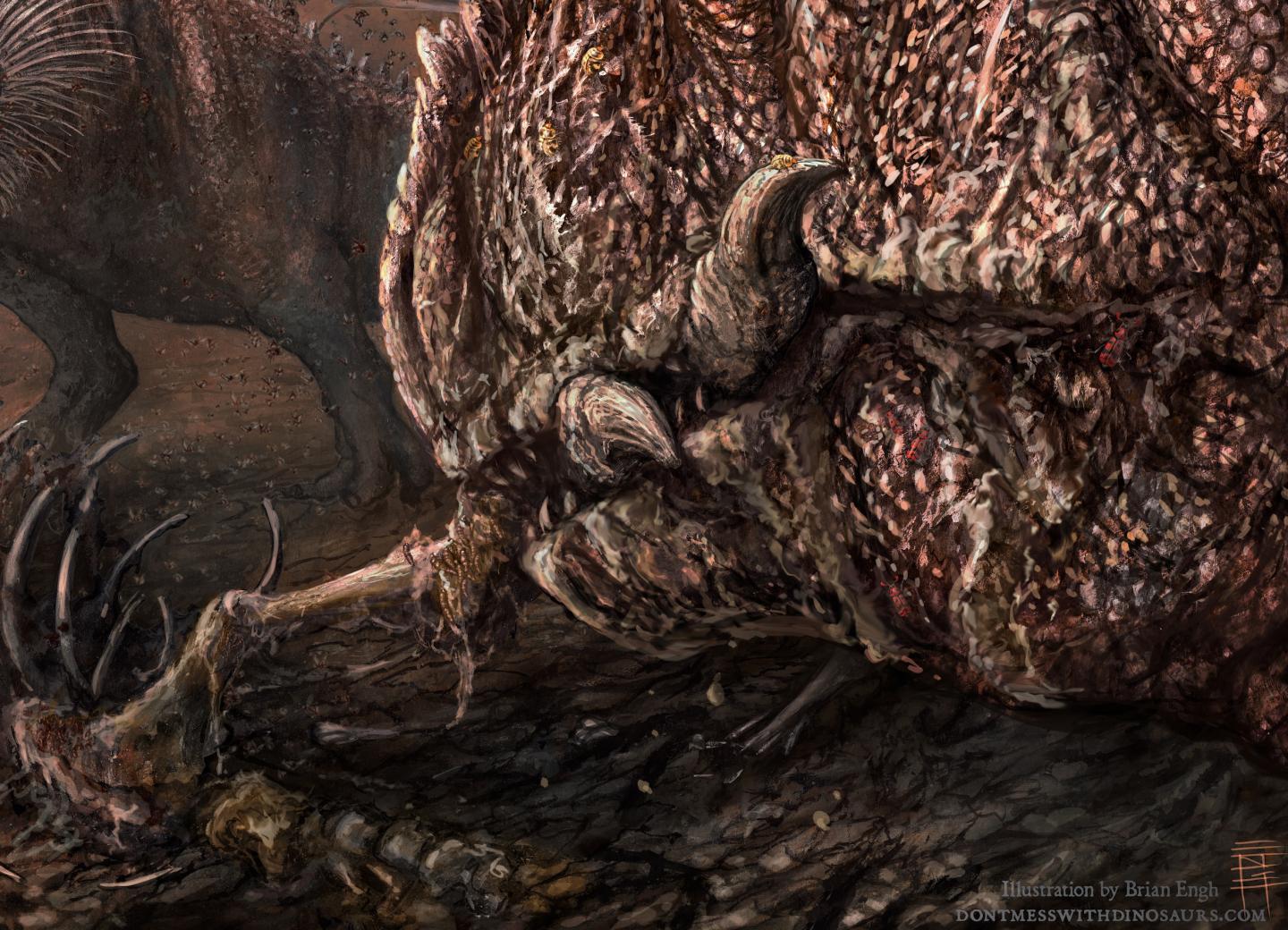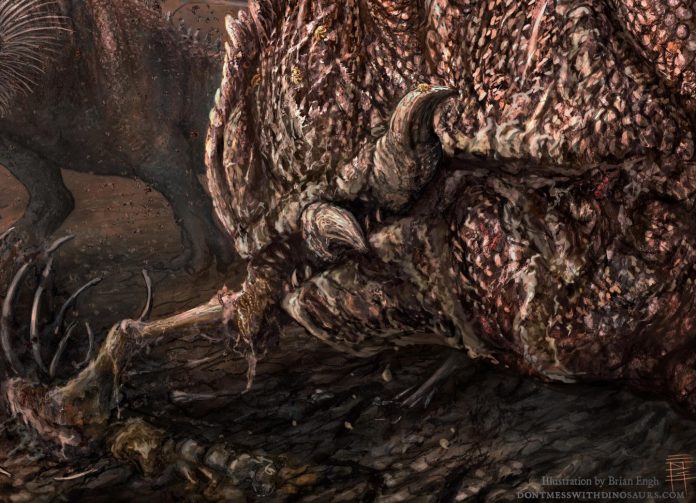
IMAGE: Decomposition of dinosaurian remains inferred by invertebrate traces on vertebrate bone reveal new insights into Late Jurassic ecology, decay, and climate in western Colorado
view more
Credit: Brian Engh
[Wednesday, July 14th Fruita, Colorado] Top predators dinosaurs like the Allosaurus and Ceratosaurus devouring dinosaur remains isn’t all that surprising, but the smaller creatures feasting on dinosaur remains may just give us a more complete picture of what life was like at Mygatt-Moore Quarry outside Fruita, Colorado 152 million years ago. A new study out in PeerJ on Wednesday, July 15th, 2020 authored by Museums of Western Colorado’s Paleontologist Dr. Julia McHugh, looks at the insect species who feasted on decaying dinosaurs back in the Jurassic period.
Researchers Dr. Julia McHugh (Museums of Western Colorado, Colorado Mesa University), Dr. Stephanie K. Drumheller (University of Tennessee), Anja Riedel (Colorado Mesa University), and Miriam Kane (Colorado Mesa University) examined more than 2,300 fossil bones over a two-year study and found over 400 traces left by insects and snails, a surprisingly high number. The marks researchers found on the fossils also came from at least six different invertebrates. These findings are a huge step to understanding the long-lost paleo diversity, and paleo climate of the Jurassic period.
It also gave researchers a better understanding of just how stinky the Jurassic period was too. The abundance of traces meant that the dinosaur carcasses must have been unburied for a long time – 5 months to 6 years or more according to this new study. “Large carcasses take a long time to decompose. The smell from a dead mouse in your basement is bad enough, but then imagine that mouse was a 65-foot long animal! The stench of rotting meat would have been a magnet for carrion insects and other scavengers,” Dr. McHugh explains.
###
For more information visit: http://www.
Additional information will be available on the Museums social media channels – Instagram: @museumsofwesternco Facebook: @crossorchards Twitter: @museumsofwc You Tube: Museums of Western Colorado
About: Museums of Western Colorado encompass the Dinosaur Journey Museum, Museum of the West, and Cross Orchards historic site. The Museums of Western Colorado inspires and connects our community by championing the scientific and cultural heritage of the Colorado Plateau.
Artwork: Illustration by Brian Engh, dontmesswithdinosaurs.com
Full paper link: https:/
About: PeerJ is an Open Access publisher of seven peer-reviewed journals covering biology, environmental sciences, computer sciences, and chemistry. With an emphasis on high-quality and efficient peer review, PeerJ‘s mission is to help the world efficiently publish its knowledge. All works published by PeerJ are Open Access and published using a Creative Commons license (CC-BY 4.0). PeerJ is based in San Diego, CA and the UK and can be accessed at peerj.com?
PeerJ – the Journal of Life and Environmental Sciences is the peer-reviewed journal for Biology, Medicine and Environmental Sciences. PeerJ has recently added 15 areas in environmental science subject areas, including Natural Resource Management, Climate Change Biology, and Environmental Impacts.
peerj.com/environmental-sciences
Across its journals, PeerJ has an Editorial Board of over 2,000 respected academics, including 5 Nobel Laureates. PeerJ was the recipient of the 2013 ALPSP Award for Publishing Innovation. PeerJ Media Resources (including logos) can be found at: peerj.com/about/press ?
For PeerJ: email: [email protected] , https:/
TDnews















